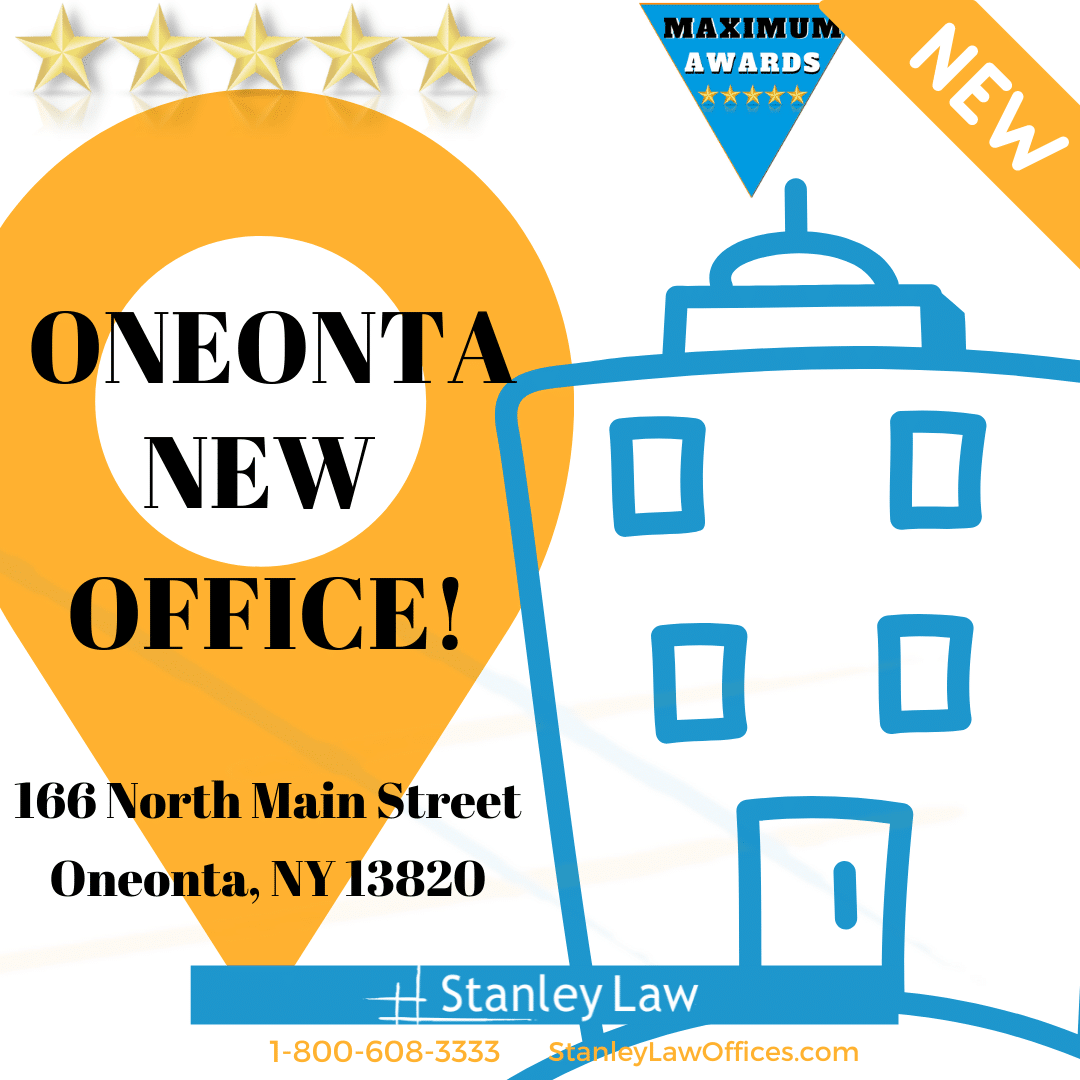NEW OFFICE FOR STANLEY LAW OFFICES NOW OPEN, ONEONTA, NY!
 Stanley Law Offices Oneonta NY NEW OFFICE
Stanley Law Offices Oneonta NY NEW OFFICE
New Office Location in Oneonta!
Stanley Law Offices Expands to Oneonta, NY: Oneonta, NY is near and dear to Joe Stanley’s heart. While virtual appointments can be convenient ongoing, it’s important for people to be able to access their legal team for some as well. So, Stanley Law Offices has expanded again with a sixth office now open at 166 North Main Street, Oneonta, NY. This is in addition to our home office at 215 Burnet Avenue, Syracuse 13203, Watertown, Rochester, Binghamton, and Montrose, PA. Consultations are FREE and we can meet in person if you have a serious personal injury accident or meet virtually via skype or zoom, whichever you prefer.
Serious personal injury claims as well as workers’ compensation and social security disability cases.
Exploring the Rich History of Oneonta, NY
Nestled in the northern foothills of the Catskill Mountains, the city of Oneonta, New York, boasts a rich history that mirrors the growth and development of America itself. Known as the “City of the Hills,” Oneonta’s story is a tapestry of Native American heritage, railway expansion, and educational prominence.
Oneonta’s Native American Roots
The history of Oneonta begins long before European settlers arrived. The area was originally inhabited by the Iroquois, specifically the Mohican and Oneida tribes. The name “Oneonta” is believed to be derived from the Iroquois word “Onahata,” which means “place of open rocks.” The native inhabitants thrived in this region, living off the rich resources provided by the land and the Susquehanna River.
European Settlement and Growth
The first European settlers arrived in the late 18th century. Oneonta’s location along the Susquehanna River made it a natural location for settlement and trade. The city was officially formed in 1830, and the arrival of the Albany and Susquehanna Railroad in 1865 marked a significant turning point. This development not only boosted the local economy but also positioned Oneonta as a critical transportation hub in upstate New York.
A Hub of Education and Culture
The late 19th and early 20th centuries saw Oneonta evolve into a center of education and culture. The establishment of the State Normal School in 1889, now the State University of New York at Oneonta, and the Hartwick College in 1928, underscored the city’s commitment to higher education. These institutions have played a pivotal role in shaping the intellectual and cultural landscape of the region.
Economic Shifts and Modernization
Oneonta experienced significant economic shifts throughout the 20th century. The decline of the railroad industry led to a diversification of the local economy, with education, healthcare, and retail becoming dominant sectors. The city has also seen a revitalization of its downtown area, preserving its historical charm while adapting to modern needs.
Oneonta, NY: A City That Honors Its Past
Our founding partner, Joe Stanley, has a passion for renovating historical buildings. In fact, our home office in Syracuse sits in a historic district. Joe personally invested in fully renovating a historic home there and turned it into the home for the Team at Stanley Law. Today, Oneonta honors its rich history through various initiatives and landmarks. The Oneonta History Center, located in the oldest brick building in the city, showcases exhibits on local history, including the city’s Native American roots, railway history, and educational institutions. Annual events like the Susquehanna Balloon Festival celebrate both the natural beauty and the enduring spirit of the community.
Oneonta’s history is a reflection of the broader American experience – a journey of indigenous heritage, technological progress, educational growth, and cultural richness. This charming city in upstate New York continues to celebrate its past while looking forward to a bright future. Stanley Law hopes to contribute to that growth and to support the Oneonta community the way we do in the other markets we serve. Take a look at our charity, Music for the Mission, to see the programs and involvement in helping the homeless and hungry across the southern tier and all of Upstate NY. If you’d like to volunteer or get involved as a musician or venue owner, please reach out to us on our website!
If you live in or around the Oneonta area and have a legal question, reach out to founding partner, Joe Stanley directly, email him at Jo*@***************es.com
1-800-608-3333
The Team at Stanley Law will be there, for you.
